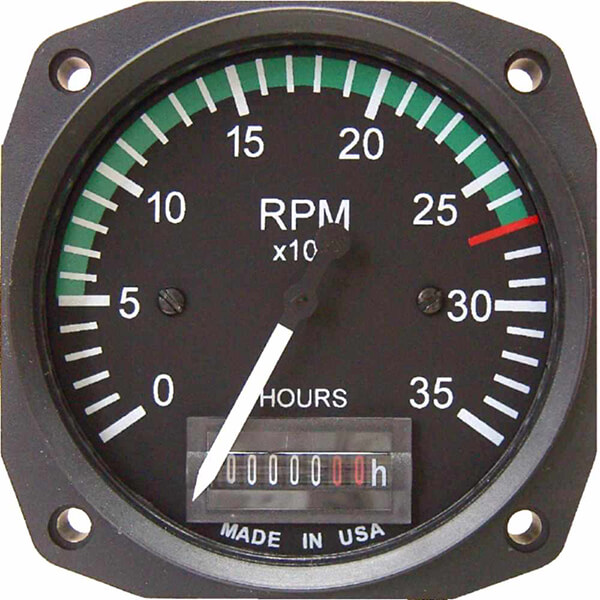Just How a Tachometer Assists Screen Engine Health And Wellness and Performance
Wiki Article
The Relevance of a Tachometer in Keeping Track Of Engine Rate and Efficiency in Automotive Applications
In the world of auto design, the tachometer stands as a pivotal tool in the motorist's toolbox, offering a straight home window into the internal workings of an automobile's engine. Past its function as a simple scale of revolutions per min (RPM), the tachometer offers as a critical device for enthusiasts and professionals alike, using real-time insights right into engine efficiency and health and wellness. Recognizing the relevance of this device goes beyond surface-level monitorings, diving right into the complex relationship between engine rate, power outcome, and total driving experience. As we explore the multifaceted role of the tachometer in vehicle applications, a deeper admiration for its influence on automobile characteristics and efficiency starts to emerge.Relevance of Keeping Track Of Engine RPM
Monitoring engine RPM, or changes per min, is an essential aspect of automotive maintenance and performance assessment. Engine RPM straight correlates with the speed at which the engine's crankshaft revolves, indicating just how promptly the engine is running.In addition, monitoring engine RPM is vital for performance evaluation in auto racing and high-performance lorries. Maintaining ideal RPM levels is crucial for attaining peak power outcome and acceleration. Racers typically use tachometers to guarantee they are running within the suitable RPM variety for maximum performance. In summary, keeping an eye on engine RPM is not just crucial for detecting problems but also for enhancing engine performance in different automobile applications.

Benefits of Real-Time Data
In automotive applications, real-time data plays a critical function in offering immediate insights into the performance and problem of the car. By continuously keeping track of numerous specifications such as engine rate, temperature, fuel consumption, and a lot more, real-time data uses numerous advantages that add to enhanced performance and safety and security when traveling.
In addition, real-time data helps with performance optimization by providing instant comments on driving habits and engine efficiency. Drivers can readjust their habits in real-time based on this details to accomplish better fuel economic situation and lengthen the life expectancy of their lorry.

In addition, real-time data plays an important function in contemporary automobile diagnostics, making it possible for professionals to quickly diagnose and attend to breakdowns. This causes reduced downtime, lower maintenance expenses, and ultimately, boosted general lorry reliability and longevity (tachometer). By utilizing the power of real-time data, vehicle stakeholders can make enlightened decisions that positively affect both the efficiency and long life of the vehicle
Effect On Gear Shifts
The tachometer plays an important function in optimizing gear shifts by giving real-time engine rate data to the chauffeur. When coming close to the redline on the tachometer, it indicates the chauffeur to upshift to protect against over-revving the engine and triggering potential damage.Furthermore, the tachometer help in accomplishing smoother gear transitions, specifically in hands-on transmissions. By monitoring engine speed, motorists can carry out equipment shifts at the optimal RPM range, reducing jerking motions and reducing wear on the transmission parts. This precision on duty modifications not only click site enhances driving comfort yet additionally contributes to fuel performance.
Enhancing Gas Effectiveness
Given the vital duty the tachometer plays in enhancing equipment shifts for performance and engine wellness, it directly adds to making the most of fuel efficiency in auto applications. By providing real-time responses on engine rate, the tachometer aids chauffeurs in he has a good point preserving the most effective RPM range for gas economy. When vehicle drivers consistently check the tachometer and change their motoring behaviors as necessary, they can avoid unneeded fuel consumption created by over-revving or hauling the engine.Moreover, the tachometer helps chauffeurs identify the most fuel-efficient gear to be in at any kind of given moment, protecting against the engine from working more challenging than needed. This is specifically vital during velocity and travelling, where being in the right equipment can significantly impact fuel effectiveness. In addition, the tachometer can inform vehicle drivers to potential mechanical issues that might be negatively impacting fuel economic situation, such as a slipping clutch or a stopped up air filter. To conclude, the tachometer acts as a beneficial tool in boosting fuel effectiveness by promoting optimum driving behaviors and identifying locations for improvement in the vehicle's efficiency.

Optimizing Engine Durability
The tachometer's role in keeping track of engine rate and performance is critical in making sure the longevity of vehicle engines. Keeping an eye on the tachometer allows chauffeurs to stay within the recommended RPM range for their vehicle, protecting against unnecessary pressure on the engine and extending its life-span.
Final Thought
In verdict, the tachometer plays a crucial function in monitoring engine rate and performance in vehicle applications. By giving real-time data on RPM, it permits for reliable equipment changes, boosted gas efficiency, and made best use of engine long life. This device is crucial for maintaining ideal engine performance and guaranteeing the general functionality of an automobile.Report this wiki page